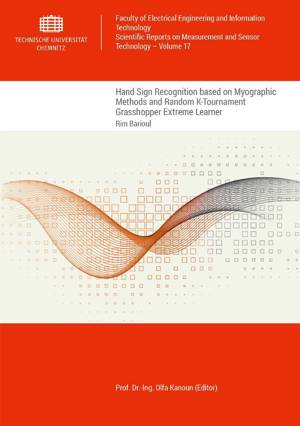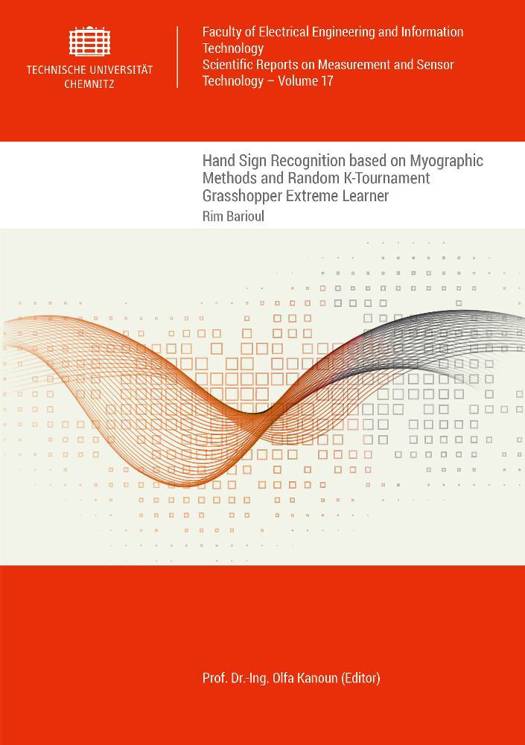
- Retrait gratuit dans votre magasin Club
- 7.000.000 titres dans notre catalogue
- Payer en toute sécurité
- Toujours un magasin près de chez vous
- Retrait gratuit dans votre magasin Club
- 7.000.0000 titres dans notre catalogue
- Payer en toute sécurité
- Toujours un magasin près de chez vous
Hand Sign Recognition based on Myographic Methods and Random K-Tournament Grasshopper Extreme Learner
Rim Barioul
21,95 €
+ 43 points
Description
Surface electromyography (sEMG), force myography (FMG) and surface electrical impedance myography (sEIM) are investigated for perspective wearable embedded systems. A database has been collected from more than 100 healthy subject performing American sign language (ASL). Classification methods have been proposed based on Extreme Learning Machine (ELM) supported by a grasshopper optimization algorithm (GOA) as a core weight pruning process. To ensure the GOA population diversity a K-tournament selection strategy is included. The K-Tournament Grasshopper Optimization Algorithm (KTGOA) has been improved for discrete optimization problems and implemented to select the ELM weights as a K-Tournament Grasshopper Extreme Learner (KTGEL). To improve the balance of exploration and exploitation, the balancing coefficients of the KTGEL are subjected to uniform randomization. The resulting Random K-Tournament Grasshopper Extreme Learner (RKTGEL) is a novel classifier with a simultaneously automated feature selection. The number of sensors and their positions have been investigated: For FMG, 8 sensors, for sEMG, 2 sensors and for sEIM, 4 equidistant electrodes for measurements in the frequencies from 1 kHz to 4 kHz, are suitable. Combinations of myographic methods reach an accuracy of 100% for small and medium ambiguous datasets. For high ambiguity, a targeted reduction of ambiguity by excluding signs with a high similarity results the RKTGEL to reach an overall accuracy of 97%.
Spécifications
Parties prenantes
- Auteur(s) :
- Editeur:
Contenu
- Nombre de pages :
- 242
- Langue:
- Anglais
- Collection :
- Tome:
- n° 17
Caractéristiques
- EAN:
- 9783961001477
- Format:
- Livre broché
- Dimensions :
- 148 mm x 210 mm
- Poids :
- 339 g

Les avis
Nous publions uniquement les avis qui respectent les conditions requises. Consultez nos conditions pour les avis.






